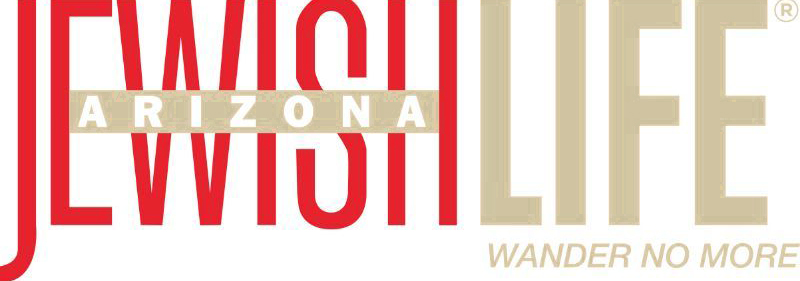For many American Jews, summer camp experiences become lasting memories of childhood. Arizona parents who want to give their children the opportunity to create their own memories need look no further than Camp Daisy and Harry Stein, formerly Camp Pearlstein, located near Prescott. CDHS was established in 1975.
Over the course of seven weeks, 300 to 350 kids, from first-graders through seniors, will spend either two, three or three and a half weeks in the beauty of the Bradshaw Forest, where they take part in a wide range of outdoor camp activities, including horseback riding, swimming, canoeing, rock-climbing (indoor is available too), mountain biking, and teva (nature) and camp crafts. Additional skills are honed with creative activities such as ceramics, digital and film photography, video production, drama, guitar instruction, Israeli and modern dance, and others. Of course, there’s also plenty of time for archery, basketball, volleyball and soccer.
CDHS is owned and run by Congregation Beth Israel in Scottsdale, and many of the kids who attend camp come from its membership. However, the camp is open to everyone, and attracts Conservative, other Reform and a large percentage of unaffiliated Jews, as well as members of CBI. Thanks to a generous endowment from CBI members Jill and Jay Stein, the camp recently purchased its original 23 acres, which it had previously been leasing from the U.S. Forest Service. The Steins’ donation, in honor of Jay’s parents Daisy and Harry Stein, also allowed the camp to buy an additional 33 acres of land adjacent to the camp, where they hope to eventually build a retreat center. “The Steins’ endowment will sustain the camp into the foreseeable future,” says Camp Director Jodi Woodnick.
Prior to its name change, which took place this past July, the camp was known as Camp Pearlstein. Irv Pearlstein, who generously provided the original funds used to build the camp, donated the money in memory of his own parents. Pearlstein, also a member of CBI, is now in his 90s. “Irv is passionate about building Jewish identity, particularly with Jewish youth,” says Woodnick. “In the mid-1970s, building a Jewish camp was a very cutting-edge way of engaging Jewish kids, particularly on the West Coast.”
CDHS is one of only four Jewish camps owned by a congregation; most of the others are owned and run by specific Jewish movements, like Reform or Conservative.
Woodnick knows the camp inside and out; she began her long association with CDHS as an elementary school-aged camper. As Woodnick grew up, she transitioned to the camp’s teen leadership program. Later she became an adult counselor, and now she is the camp’s director. When asked what makes CDHS unique among other Jewish sleepover camps, Woodnick replies, “Our location. We have access to the entire Southwest, so we can go to the Grand Canyon. The proximity to amazing outdoor locations is very unique to this area.”
Woodnick is very proud of the camp’s leadership training programs for teen campers, which begin in the ninth grade and go through senior year of high school. These programs are designed to give older campers an age-appropriate experience that includes planning and implementing activities for other campers and taking on some responsibility for themselves. Eleventh-graders spend four weeks of their summer in Israel. Woodnick explains, “Ninth- and 10-graders live in a separate area of camp known as the LTP (leadership training program); it’s like a separate village. During the summer they go on a five-day camping trip away from camp, where they cook their own food and set up their tents. They’re in charge of their own experience; they determine what activities they do, and feel a sense of ownership and personal connection to the program.”
LTP campers also plan the camp’s last night banquet, and the “LTP Takeover,” where adult staff gets the night off and the LTP campers put the younger campers to bed. The LTP programs are designed to serve as preliminary training for future adult staff. “All Jewish camps have some kind of graduated leadership system to provide age-appropriate camp and leadership experiences for older campers,” says Woodnick. Many of the staff first came to CDHS as children, as Woodnick did, and then return as adult counselors. “Here we have a high staff retention rate, about 95 percent from summer to summer.”
CDHS incorporates the Jewish components of its programs into many of the activities found in secular summer camps. “We have designated time for Jewish education every day, but we also integrate Jewish values into everyday camp experiences,” says Woodnick. For example, an older camper showing a younger one how to saddle a horse or shoot an arrow emphasizes the values of teaching, learning and caring for others. Woodnick adds, “Every year we have a different Jewish theme. One year was Israel; one year was God and faith, one year was Jewish values. All our programming is designed with that year’s specific theme in mind.”
She continues, “There is no single experience that can better enhance a child’s self-confidence, Jewish identity, and social/emotional development than a session at Camp Daisy and Harry Stein. As a lifetime camper and staff member, I provide living proof that Camp Stein can inspire someone to take hold of Judaism during childhood, embrace it during adolescence and integrate it into a fulfilling adulthood.”
_____________________________
A Typical Day at CDHS:
7:30 a.m. Boker Tov!
8:00 Flag Raising & Morning Blessings
8:15 Breakfast
9:00 Cabin Nikayon (clean-up)
9:30 Limud (interactive program based on our summer’s educational theme)
10:30 Rock climbing with your cabin
11:30 Horseback riding for Haggigah (camper choice activity)
12:15 p.m. Lunch and song session
1:00 Camp Nikayon (clean-up)
1:15 Menucha (rest hour)
2:15 Chofesh (structured free time)
3:00 Snack
3:15 Swimming for Chug (camper choice activity)
4:00 Archery with your cabin
5:00 Shower time
6:00 Dinner and song session
7:00 T’fillah (camper-led interactive prayer service)
8:00 Evening program
9:30 Lila Tov!





